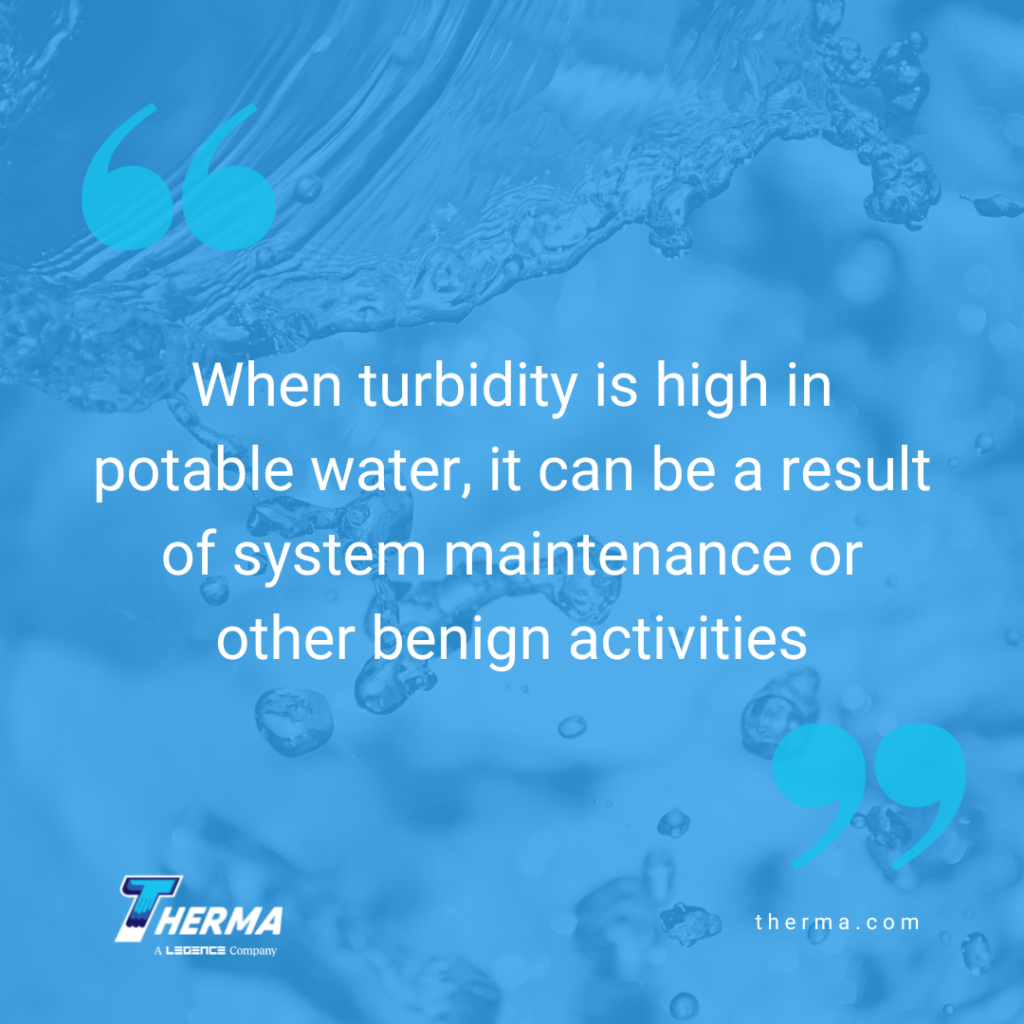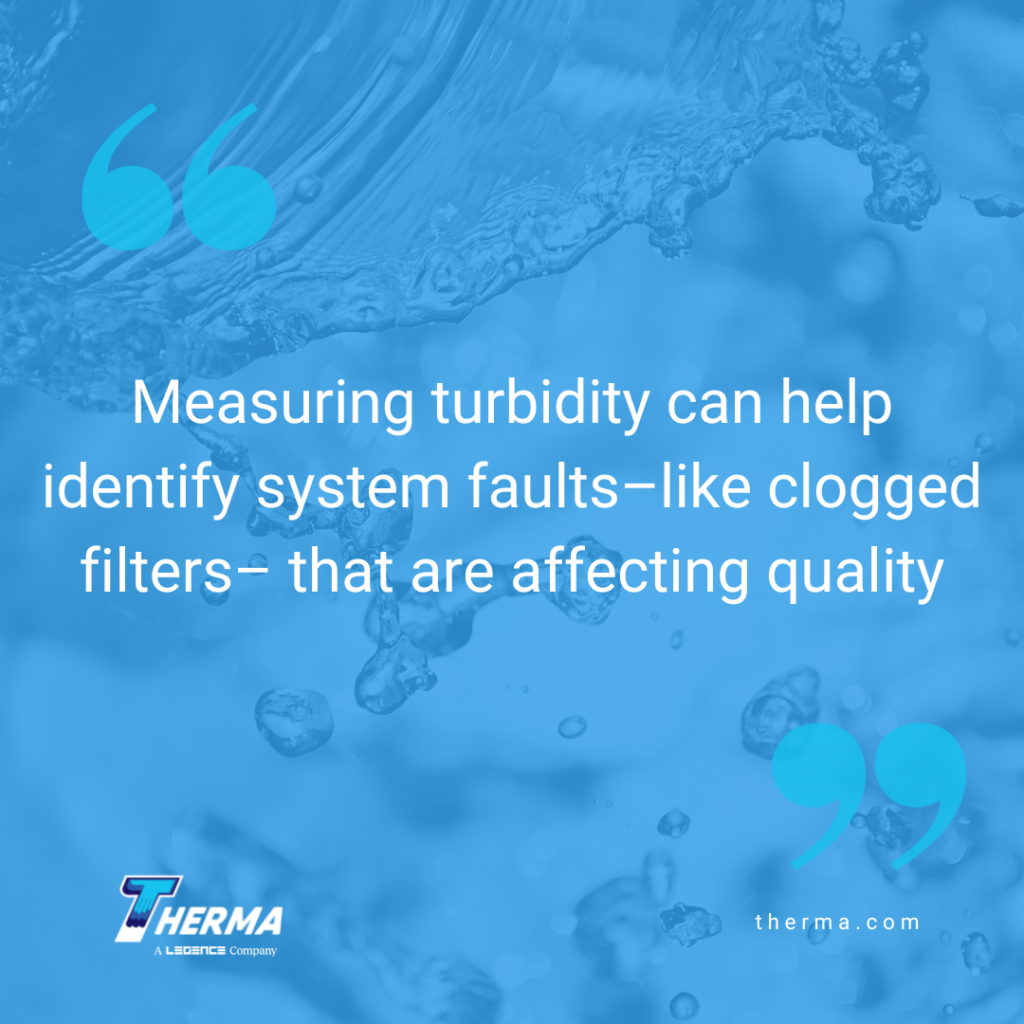by Ali Kriscenski
Turbidity is a measure of the clarity of water and other liquids. It can indicate the presence of suspended particles, such as silt, algae, sewage, minerals, or other contaminants. It can be a useful measure of water quality in natural ecosystems, such as rivers and streams, and also in manmade processes such as beverage production, biopharmaceutical processes, and wastewater treatment. This article looks at what turbidity is, how to identify and measure it, and also why it’s important to monitor.
What is Turbidity?
Turbidity can be described as a degree of clarity, the more turbidity the less transparency in a liquid. The presence of turbidity can be the result of several factors. In the natural landscape, events such as heavy rainfall or stormwater runoff can disturb soils and increase the level of suspended particles in water bodies. In processing facilities, turbidity can be a result of insoluble chemicals or nutrients.
How Turbidity is Measured
As an optical characteristic, turbidity can be assessed visually with manual measuring devices. These can include sampling with a turbidity tube or Secchi disk. Tubes can be used to withdraw a sample while the disks are lowered into the liquid in holding tanks or other collecting areas. Both work off of visual markings which once obscured can be cross-referenced to a turbidity scale, marked on the outside of the turbidity tube or along the pole attached to the Secchi disk.
The readings use NTU (Nephelometric Turbidity Unit) to convey the level of turbidity. The unit measures how light scatters in the sample compared to a reference. This method of turbidity measurement can be useful in settings where general readings are acceptable or in field settings, such as natural stream monitoring.
Digital turbidity meters can provide more accuracy at low turbidity levels, where visual calculation has less precision or may be difficult to obtain. In applications such as processing, the complexity of process piping, operational continuity, and other equipment or process stages can make turbidity monitoring a challenge. In-line turbidity sensors and monitors can be integrated into the processing design allowing continuous monitoring of process quality.
Turbidity Monitoring in Facilities
Many industries depend on a consistent water supply and the ability to monitor water quality, either in processes or in wastewater discharge. Industrial water supplied by city water or groundwater can contain sediments and must be treated and monitored before use in precision equipment. Turbidity monitoring is one measure that helps equipment, processes, products, and waste stay within required quality levels.
Drinking water systems are a central resource for households and commercial properties. When turbidity is high in potable water, it can be a result of system maintenance or other benign activities. However, it can also indicate the presence of sediments that don’t belong. When organic particles in water are excessive this can increase the risk of health concerns, such as harmful bacteria or pollutants.
In the food and beverage industry, turbidity can affect the quality of end products both in appearance or appeal and safety. While quality monitoring can include temperature, disinfectant levels, or pH, turbidity monitoring can be a useful measure along the process ensuring that mixtures are balanced and meeting regulatory standards.
Importance of Turbidity Monitoring
Measuring turbidity at critical points along a process can help identify system faults–like clogged filters– that are affecting quality. If process piping, tanks, or other sensors along a system have unwanted sediments or excess insoluble mixtures, turbidity meters can inform technicians to make adjustments before problems such as bacteria growth.
Industries that discharge wastewater has a range of environmental regulations with which they must comply. These standards, often overseen by the USEPA, have guidelines not only for water quality but also for the monitoring, calibration, and verification methods used to achieve compliance. For example, the EPA requires turbidity meters to be calibrated no less than quarterly.
Efficient Turbidity Monitoring
In applications where low turbidity levels are required, monitoring can be achieved with high-precision turbidity meters that are integrated into process system lines. Systems that are designed with in-line meters can meet compliance and quality requirements efficiently without system down time. Additionally, this monitoring capacity can improve maintenance programs by increasing the data available to technicians and providing real-time information for system calibration. To learn how a trusted professional can help your facility with turbidity monitoring, contact Therma today.
AUTHOR BIO
Ali Kriscenski was trained in high-performance building design at Boston Architectural College. She has worked with leading architecture and construction firms in NYC and New England and served on the executive team at the Forest Stewardship Council International. She was the managing editor at Inhabitat and has worked pro bono for the Green Building Institute, ISEAL Alliance, and Habitat for Humanity.
Sources
Food Business News – The Value of Beverage Clarity
USGS – Turbidity and Water
American Water Works Association – Ensuring Accurate Turbidity Measurements through Turbidimeter Calibration and Verification









